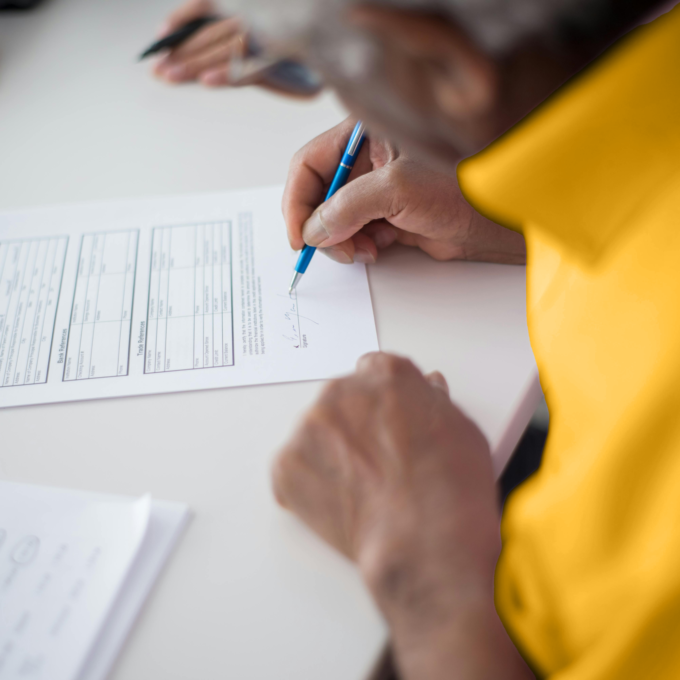- Debt relief starts here
- Who we are
-
-
Our locations
-
Debt Relief in Alberta
-
Debt relief in British Columbia
-
Debt relief in Manitoba
-
Debt relief in New Brunswick
-
Debt relief in Newfoundland and Labrador
-
Debt relief in Nova Scotia
-
Debt relief in Nunavut
-
Debt relief in the Northwest Territories
-
Debt relief in Ontario
-
Debt relief in Prince Edward Island
-
Debt relief in Saskatchewan
-
Debt relief in the Yukon
-
Secured vs. unsecured debt: What's the difference?

There are two types of consumer debt: secured and unsecured debt. The major difference is whether collateral is required to protect the lender. Secured debt is backed by collateral, meaning that something you own or the thing the loan is for (e.g., a house or car) can be seized by your lender if you fail to repay your loan. On the other hand, unsecured debt is granted based on credit history or income, not collateral.
What is secured debt?
Lenders often use secured debt for large loans, such as a mortgage or car loan. When entering a secured debt agreement, you, as the borrower, agree to put up the asset you purchased with the loan as collateral. If you have lower credit, lenders may ask you to back other loans with an asset. So, if you fail to make your payments, your creditor can seize and sell the asset to meet your remaining debt obligations. Secured creditors like secured loans because there’s less risk when lending money, whereas borrowers like secured loans as their interest rates are generally lower.
Is secured debt included in a bankruptcy or consumer proposal?
Secured creditors don’t lose their right to an asset if you go bankrupt or file a consumer proposal. In a bankruptcy or consumer proposal, should you wish to keep the asset you pledged as collateral, you must continue to pay the secured creditor. Creditors will allow you to keep the asset, but only if your payments are up to date when you file your bankruptcy or proposal.
Secured debt and collateral agreements can become very complex very quickly. If you have questions about your secured debt, we suggest meeting with a professional to learn more about your options.
Types of secured debt
Mortgages. A type of loan where the property purchased with the loan is used as collateral to guarantee the loan. Lenders may foreclose on or repossess the property if you default on your mortgage.
Vehicle loans. Loans for cars, motorcycles, boats, Skidoos, etc. If you fail to make consistent payments, lenders may repossess the vehicle.
Secured credit cards. Typically used to rebuild your credit, secured credit cards require a cash deposit. This deposit is used as collateral if payments aren't received.
What is unsecured debt?
Lenders grant unsecured debt without any collateral or security to back it. This type of loan is generally issued based on your credit history and income. Often, unsecured debt comes with higher interest rates than secured debt. Failing to repay an unsecured debt can damage your credit score and lead to excessive calls from a collection agency.
Is unsecured debt included in a bankruptcy or consumer proposal?
Yes. Your bankruptcy or consumer proposal will include your unsecured debt. Filing a consumer proposal can eliminate up to 80% of your unsecured debt. Explore why consumer proposals are becoming a popular bankruptcy alternative.
Types of unsecured debt
Revolving loans. Most commonly, credit cards, lines of credit, and personal loans that allow you to spend as you go. These loans typically come with an annual interest rate upwards of 18%.
Student loans. Whether federal, provincial, or private, these loans are intended for educational costs. Learn more about how to deal with student loan debt.
If you’re struggling to manage your debt—secured or unsecured—it might be time to speak with a Licensed Insolvency Trustee. We offer judgment-free, 30-minute consultations to help you find your best path to debt freedom. Book online or call us today at 1-844-4GT-DEBT to start your journey to a brighter financial future.
Take the first step to debt freedom
Speak to one of our debt solutions professionals during a free, no-obligation consultation.
Related articles

How to help friends or family struggling with debt

What happens to debt after death?

Can you reduce tax debt with a consumer proposal?

How to budget as a single parent

Dating and debt: the relationship between love and money

How tariffs impact Canadians—and how to prepare if you’re facing debt

How do bankruptcies work in Canada?
Looking for assurance, tax, and business advisory services? Visit Doane Grant Thornton LLP.

Loading